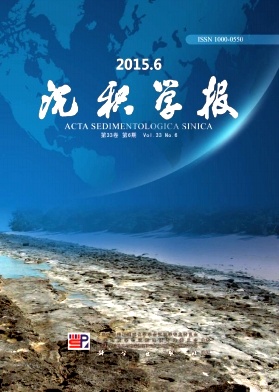Provenance Studies of Chinese Deserts:Review and Outlook
doi: 10.14027/j.cnki.cjxb.2015.06.001
- Received Date: 2014-07-14
- Rev Recd Date: 2014-11-27
- Publish Date: 2015-12-10
-
Key words:
- Chinese deserts /
- sediments /
- grain-size distribution /
- geochemistry /
- provenance analysis
Abstract: Provenance studies of aeolian sand seas not only have great theoretical and practical significance in aeolian geomorphology, but also are essential for understanding the complex linkages between dust emission, loess accumulation, climate system, and ocean biogeochemistry cycles. A brief historical survey of Chinese deserts illustrates the limitations of modern provenance research. The state of the art in basic ideas, techniques, and their applications in provenance analysis of sediments are reviewed across Chinese sand seas. Traditionally sediment provenance studies are deductive approach, which depend on compositional and textural sediment properties based on geochemistry, mineralogy, and petrography, and its main difficulty stems from the fact that sediments are not a one-to-one image of their source, implying that factors other than parent lithology determine their final composition. Combined with the future research trend on quantitative provenance analysis(QPA) of sediments, some problems on data-acquisition and processing methodologies in provenance studies across global sand seas is presented, such as sampling design and physicochemical analysis of sediment, grain-size dependence of sediment composition and environmental bias, compositional data statistically treated with the log-ratio method for avoiding the well-known problems of spurious correlation and negative bias, limitations of typical Dickinson diagrams, and so on. Generally, current more attention has been paid to the inverse approach based on compositional properties, which dominates the field of quantitative provenance analysis, whereas applicable process-based forward model of sediment generation, which could predict simultaneous evolution of the grain-size distribution, as well as the petrographic, mineralogical and chemical composition of weathering products of specific parent rocks under a range of climatic and tectonic conditions, do not yet exist. Unraveling the history of sediments is a complex and challenging task which needs multidisciplinary efforts like sedimentology, petrography, mineralogy, geochemistry, geochronology, structural geology, stratigraphy, mathematical geology, and geomorphology. It is concluded from this review that the QPA of Chinese sand seas over historic and geologic timescale is still in its infancy and future provenance studies is needed to towards a holistic view of sediment routing systems at various temporal and spatial scales and their coupling with uplift, climate and denudation in mountain belts as well as transfer of sediments from the continents to the atmosphere and oceans. These include(i) to build sedimentary compositional data bases using a uniform sampling design and analytical measurements across sand seas of China, to develop and use mathematically rigorous methods of statistical analysis and numerical modeling of sediment composition when dealing with compositional data such as data in percentages, concentrations or proportions,(ii) to construct a process-based sediment generation model(Forward model) capable of predicting the simultaneous evolution of the texture, as well as the petrographic, mineralogical and geochemical composition of weathering products of specific parent rocks under a range of climatic and tectonic conditions, using typical sand deserts of China which have available parent lithology, tectonic setting, regional geography, and climatic-physiographic data sets, to calibrate and validate forward models by sufficient high-quality data bases established at similar temporal and spatial scales,(iii) to assess contribution ratios and transport pathways of four possible proximal sources in Chinese deserts, to reveal mechanism of the formation and production of desert loess and silt quartz grains, to compare aeolian sand sources of Chinese deserts with most of the worldwide low-latitude deserts,(iv) to establish internal connections between deserts, wind-blown dust emission, loess accumulation, and climate system and ocean biogeochemical cycles at historic and geologic scales, and to build a Earth system model coupling with continent, atmosphere and ocean for understanding the Earth surface processes.
| Citation: | FU XuDong, WANG YanSong. Provenance Studies of Chinese Deserts:Review and Outlook[J]. Acta Sedimentologica Sinica, 2015, 33(6): 1063-1073. doi: 10.14027/j.cnki.cjxb.2015.06.001 |






 DownLoad:
DownLoad: